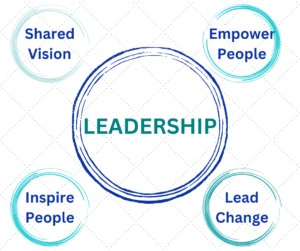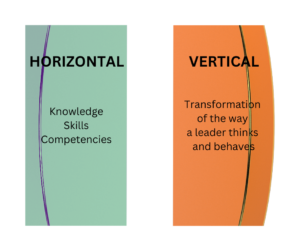
Leadership is a complex and multifaceted concept. There are many different definitions of leadership, and there is no one right way to lead. However, there are some common themes that run through most definitions of leadership. These themes include:
- Influence: Leaders are able to influence others to achieve a common goal.
- Vision: Leaders have a vision for the future and are able to articulate that vision to others.
- Motivation: Leaders are able to motivate others to take action.
- Communication: Leaders are able to communicate effectively with others.
- Problem solving: Leaders are able to solve problems effectively.
- Decision making: Leaders are able to make decisions effectively.
- Relationship building: Leaders are able to build relationships with others.

In order to be effective, leaders need to develop both horizontal and vertical development.
- Horizontal development refers to the acquisition of new skills, knowledge, and competencies. Horizontal development is important because it allows leaders to keep up with the latest trends and developments in their field. It also allows leaders to develop new skills that they can use to be more effective in their work. The mainstream understanding of leadership development is focused on horizontal development. While horizontal development is important, it is not enough to develop leaders who can operate effectively in today’s complex world.
- Vertical development refers to the transformation of the way a leader thinks and behaves. Vertical development is important because it allows leaders to become more self-aware and to develop their ability to think critically and strategically. It also allows leaders to become more open-minded and to be more able to see the world from different perspectives. Vertical development can be challenging, but it is necessary for leaders who want to effect systemic change. Vertical development transforms who a leader is by shifting their mindset, challenging their beliefs, increasing their wisdom, expanding their consciousness, and ultimately building their capacity to interpret, relate, and lead in today’s highly complex world.
- Vertical development is a lifelong process. It is not something that can be achieved overnight. It takes time, effort, and commitment.
- Vertical development is an individual process. Everyone will experience vertical development in their own way. There is no one right path.
- Vertical development is a transformative process. It can change the way a leader thinks, feels, and behaves.
- Vertical development is a necessary process for leaders who want to be effective in today’s complex world.
Both horizontal and vertical development are important for leadership development. Leaders who are committed to both types of development will be better equipped to lead in today’s complex world.

How to Develop Vertically
There are many ways to develop vertically. One way is through reflection and self-awareness. Leaders need to be able to reflect on their own thinking and behavior, and to identify areas where they can grow. Another way to develop vertically is through challenging experiences. Leaders need to be willing to step outside of their comfort zone and take on new challenges. This can help them to develop new skills and perspectives. Finally, leaders can also develop vertically through relationships with others. Learning from others can help leaders to expand their thinking and to see the world in new ways. A coach can support you on your journey.
How to Develop Horizontally
There are also many ways to develop horizontally. One way is through education and training. Leaders can take courses, attend workshops, and read books to learn new skills and knowledge. Another way to develop horizontally is through experience. Leaders can take on new roles and responsibilities, and they can work with different people and teams. This can help them to develop new skills and competencies. Finally, leaders can also develop horizontally through networking. Connecting with other leaders can help them to learn new things and to stay up-to-date on the latest trends.